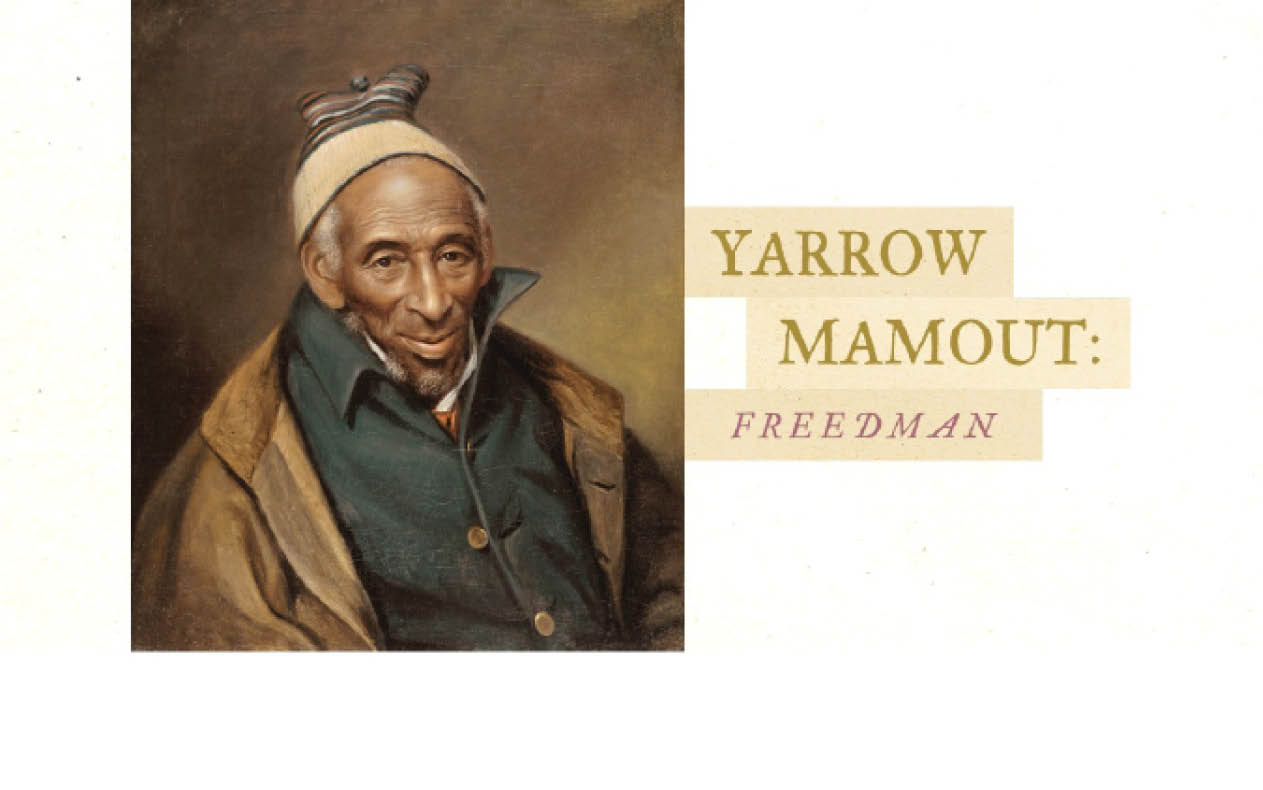In continuation of our Islamic heritage series, our tribute to the holy month of Ramadan, we feature today yet another former slave, an exemplary Muslim taken from the shores of West Africa to the slave plantations of America. His story is truly very inspirational.
In 1752, Yarrow Mamout (Muhammad Yaro, accordingly to Wikipedia) was taken from his home in Guinea, West Africa, to Maryland. He was 16, well-educated and could read and write Arabic. Mamout was a slave for 44 years, first in Takoma Park, Md., under his owner Samuel Beall, and eventually in Georgetown, under Beall’s son. After decades of saving his money, Mamout bought his freedom at the age of 60.
In the following years, he worked odd jobs to establish himself and save money, yet fell prey to several near-crushing swindles. Finally, in 1800, Mamout earned enough not only to purchase a property on Dent Place, but also to begin lending to others. He became a financier for Georgetown’s black and white merchants and eventually came to own stock in the Columbia Bank of Georgetown.
Mamout’s prominence in the neighborhood piqued the interest of two artists: Charles Wilson Peale – who is best known for his portraits of leaders of the American Revolution – painted Mamout in 1819, and James Alexander Simpson – who later became the first professor of drawing and painting at Georgetown – painted the financier in 1822.
It was after seeing Simpson’s portrait of Mamout in the Georgetown branch of the D.C. Public Library that modern historian, James L. Johnston decided to explore Mamout’s story. In an interview with the Washingtonian, he said, “I couldn’t believe that no one had researched a black man who was the subject of two formal portraits in the early 19th century.”
In 2012, after eight years of research, Johnston published “From Slave Ship to Harvard: Yarrow Mamout and the History of an African American Family,” a biography that chronicles Mamout’s life and accomplishments.
The book’s publication, and Johnston’s attempts to preserve Dent Place, shed light on Mamout’s important yet often overlooked story.
Adam Rothman, a professor in Georgetown’s department of history specializing in slavery and abolition, said Mamout’s story encourages a more nuanced reading of slavery in America.
“Mamout’s life shows the varieties of experiences of enslaved people,” Rothman wrote in an email to The Hoya. “Not only is he one of the best documented Africans to live in early Georgetown, but he was a practicing Muslim. That’s important because too many people are unaware of the long presence of Muslims in America.”
Maurice Jackson, an associate professor of history and African-American studies, also touched on how Mamout’s story plays into the greater historical narrative of race and identity in America.
“It’s significant because we can trace him back to Guinea, and we can be absolutely sure he was a devout Muslim,” Jackson said.
LIBRARY OF CONGRESS
Jackson added, however, that what makes Mamout’s life most intriguing was his unmatched ability to persevere.
“He worked so hard to purchase his freedom, he had so many challenges – but nonetheless bought his freedom and that of his family,” Jackson said.
Jackson believes Mamout’s story has the power to do far more than enrich Georgetown’s history books and diversify slave narratives. He argues that studying stories like Mamout’s can give vital context to today’s most pressing issues and potentially encourage social action.
Jerry McCoy, a special collections librarian at the Georgetown branch of the D.C. Public Library, oversaw Simpson’s portrait of Mamout for several years.
While he always considered the portrait the crown jewel of the collection, McCoy said, “The majority of visitors didn’t comprehend its importance. I was saddened when people would come in and give a two-second glance.”
After Johnston’s biography of Mamout was published in 2015 and a subsequent feature on Mamout was published in the Washington Post that same year, the National Portrait Gallery approached McCoy about including the portrait in one of its annual rotations.
Now, Simpson’s portrait of Mamout hangs in the Gallery’s “American Origins” section, alongside the portraits of several prominent white male figures, including William Henry Harrison, ninth President of the United States; Oliver Hazard Perry, an American naval commander; and Winfield Scott, a U.S. army general and candidate for the Whig Party in 1852.
Since the piece arrived at the gallery in 2016, curators have used the portrait in special programs exploring the history of America’s earliest Muslims.
Excerpted from philamuseum.org
And from Wikipedia:
Yarrow Mamout (Muhammad Yaro)
Yarrow Mamout (c. 1736 – January 19, 1823) was a former slave, entrepreneur, and property owner in Georgetown, Washington, DC. Mamout has been described as a brickmaker, a jack of all trades, a charcoal maker, a ship loader, and a basket weaver.
Mamout was enslaved and taken to Annapolis from Guinea in 1752. He was originally from West Africa of the Fulani people and spoke the Fula language and rudimentary English. Because he could read and write in Arabic and could also write his name in English, historians believe he came from a wealthy Muslim family.
Samuel Beall and his son kept him in slavery. Beall owned a plantation in Takoma Park. After 44 years of being slave, Mamout gained freedom at the age of 60.
He made enough money to purchase 3324 Dent Place NW in the early 1800s and was a financier who lent funds to merchants. He also owned stock in the Columbia Bank of Georgetown.
There are two known portraits of Mamout, painted by James Alexander Simpson and Charles Willson Peale.

 Join Daily Trust WhatsApp Community For Quick Access To News and Happenings Around You.
Join Daily Trust WhatsApp Community For Quick Access To News and Happenings Around You.


